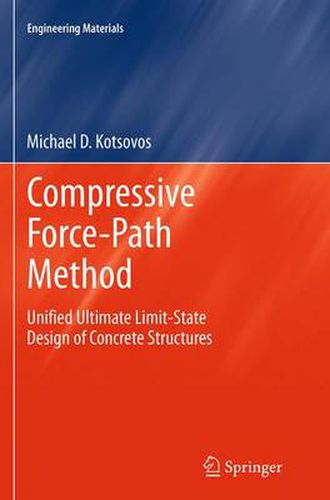Readings Newsletter
Become a Readings Member to make your shopping experience even easier.
Sign in or sign up for free!
You’re not far away from qualifying for FREE standard shipping within Australia
You’ve qualified for FREE standard shipping within Australia
The cart is loading…






This title is printed to order. This book may have been self-published. If so, we cannot guarantee the quality of the content. In the main most books will have gone through the editing process however some may not. We therefore suggest that you be aware of this before ordering this book. If in doubt check either the author or publisher’s details as we are unable to accept any returns unless they are faulty. Please contact us if you have any questions.
This book presents a method which simplifies and unifies the design of reinforced concrete (RC) structures and is applicable to any structural element under both normal and seismic loading conditions. The proposed method has a sound theoretical basis and is expressed in a unified form applicable to all structural members, as well as their connections. It is applied in practice through the use of simple failure criteria derived from first principles without the need for calibration through the use of experimental data. The method is capable of predicting not only load-carrying capacity but also the locations and modes of failure, as well as safeguarding the structural performance code requirements.
In this book, the concepts underlying the method are first presented for the case of simply supported RC beams. The application of the method is progressively extended so as to cover all common structural elements. For each structural element considered, evidence of the validity of the proposed method is presented together with design examples and comparisons with current code specifications. The method has been found to produce design solutions which satisfy the seismic performance requirements of current codes in all cases investigated to date, including structural members such as beams, columns, and walls, beam-to-beam or column-to-column connections, and beam-to-column joints.
$9.00 standard shipping within Australia
FREE standard shipping within Australia for orders over $100.00
Express & International shipping calculated at checkout
This title is printed to order. This book may have been self-published. If so, we cannot guarantee the quality of the content. In the main most books will have gone through the editing process however some may not. We therefore suggest that you be aware of this before ordering this book. If in doubt check either the author or publisher’s details as we are unable to accept any returns unless they are faulty. Please contact us if you have any questions.
This book presents a method which simplifies and unifies the design of reinforced concrete (RC) structures and is applicable to any structural element under both normal and seismic loading conditions. The proposed method has a sound theoretical basis and is expressed in a unified form applicable to all structural members, as well as their connections. It is applied in practice through the use of simple failure criteria derived from first principles without the need for calibration through the use of experimental data. The method is capable of predicting not only load-carrying capacity but also the locations and modes of failure, as well as safeguarding the structural performance code requirements.
In this book, the concepts underlying the method are first presented for the case of simply supported RC beams. The application of the method is progressively extended so as to cover all common structural elements. For each structural element considered, evidence of the validity of the proposed method is presented together with design examples and comparisons with current code specifications. The method has been found to produce design solutions which satisfy the seismic performance requirements of current codes in all cases investigated to date, including structural members such as beams, columns, and walls, beam-to-beam or column-to-column connections, and beam-to-column joints.